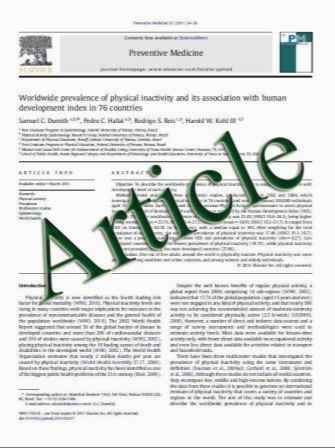Hydralazine and magnesium valproate as epigenetic treatment for myelodysplastic syndrome. Preliminary results of a phase-II trial
- نوع فایل : کتاب
- زبان : انگلیسی
- مؤلف : Myrna Candelaria & Aquileo Herrera & Juan Labardini & Aurora Gonzلlez-Fierro & Catalina Trejo-Becerril & Lucیa Taja-Chayeb & Enrique Pérez-Cلrdenas &
- چاپ و سال / کشور: 2010
Description
Decitabine and azacitidine, two DNA methyltransferase (DNMT) inhibitors, are the current standard of treatment for myelodysplastic syndrome (MDS). Histone deacetylase (HDAC) inhibitors are also being tested against MDS. Both drug classes synergize in their gene reactivating and anticancer activities. The combination of hydralazine and valproate (Transkrip®), a DNMT and HDAC inhibitor, respectively), has been developed as epigenetic therapy under the drug repositioning concept. To evaluate the clinical efficacy and safety of hydralazine and valproate against MDS, an open phase-II study for previously treated patients with MDS was conducted. The hydralazine dose was given according with the acetylator phenotype, and valproate was dosed at 30 mg/kg/day. Response was graded with International Working Group criteria. Toxicity was evaluated by the Common Toxemia Criteria-National Cancer Institute version 3 scale. From November 2007 to January 2010, 12 patients were included. Median age ± SD was 53±19.78 years (range, 23–79 years); median time from diagnosis to inclusion in the study was 7.9 months (range 2.6–36.1 months). Median of previous treatment was 2 (range, 1–6). Refractory cytopenia with multilineage dysplasia was diagnosed in ten cases, and refractory anemia with excess of blasts in two. Overall response was documented in six (50%) of 12 cases, including one CR, one PR, and four hematological improvements of the erythroid series. Two patients (16.6%) progressed to acute myeloid leukemia. Hemoglobin increased from 7.4 to 10.3 g/dL (in 13 weeks), neutrophils, from 1.1 to 2.0 (in 3 weeks), and platelets, from 66×109 to 72×109/L (in 2 weeks). Transfusional requirements decreased from 2.3 to 0 U bi-monthly for red blood cells and from 0.5 to 0 U bi-monthly for platelets in responding patients. Main toxicities were mild, including somnolence and nausea. Preliminary results of this phase- II study suggest that the combination of hydralazine and valproate is a promising non-toxic and effective therapy for MDS.
Ann Hematol (2011) 90:379–387 DOI 10.1007/s00277-010-1090-2 Received: 21 April 2010 / Accepted: 22 September 2010 / Published online: 5 October 2010


